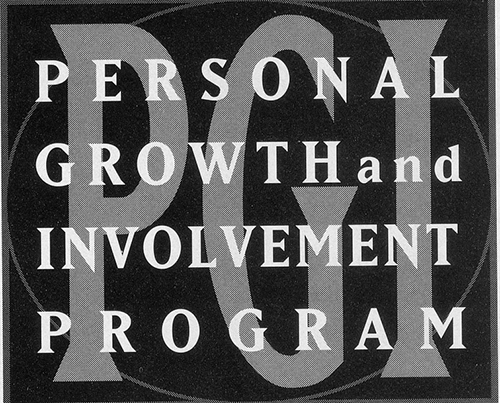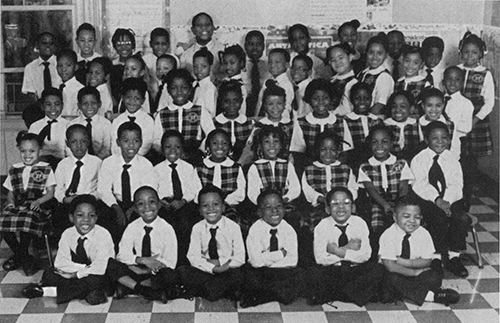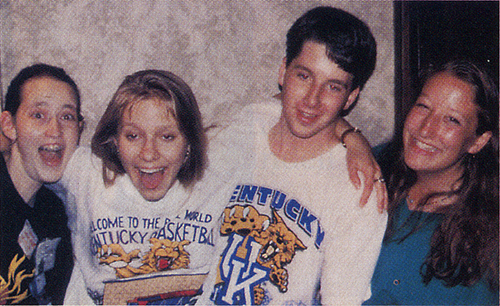As Optimists explored ways to update their long-lived ongoing programs, one aspect always remained the same—their mission to provide positive activities for children and teens. As established with the first Youth Club in 1924, adult members saw the future of their organization in the eyes of their younger counterparts. Keeping with their goal of introducing as many children as possible to the philosophy of helping others, the organization developed Alpha Clubs. Since June 1992, kids in first through fourth grades have embraced leadership development and service opportunities across North America. It didn’t take long for all Youth Club members to immerse themselves in Optimism. They dreamed of becoming the same viable community entity as their parent organization, and pursued that goal. Until this time, Junior Optimist Octagon International (JOOI) conventions were for District officers only, but in July 1993 JOOI members planned their first organization-wide international convention. With full support of their sponsors, 300 of JOOI’s 20,000 members gathered in Louisville, Kentucky, for a weekend of celebration, learning and decision making.
|
|
Thanks to a group of dedicated West Coast Optimists, Optimist International’s future was also taking a new shape, but this time in the public arena. On January 1, 1996, the organization joined prestigious ranks by sponsoring its first Tournament of Roses Parade float in 28 years. The following summer, delegates to the International Convention in Las Vegas passed an $.80 dues increase earmarked for the Rose Parade float that enabled the tradition to carry on for several more years.
Optimists were also reaching new heights with their junior golf program. After co-producing the Optimist Junior World of Golf championships for 17 years with the San Diego City Junior Golf Association, Optimist International developed its own championship event. In 1995, the Optimist International Junior Golf Championships (OIJGC) was born and functioned completely under Optimist control. The Doral Golf Club in Miami Beach, Florida, housed the event’s inaugural run and then the event moved to PGA National Resort and Spa in Palm Beach Gardens, Florida, in an attempt to attract corporate funding and television coverage.
This prestigious tournament rapidly gained respect from junior golfers worldwide. In 1997 the flourishing program received national and international recognition on ESPN. The event continues to draw around 600 young golfers every summer and is considered to be one of the top junior golf tournaments.
The junior golf program taught children and teens that excelling athletically also required improving one’s interpersonal, leadership and teamwork skills. These same basic concepts apply to adult Optimists. So, in a decade where an emphasis had been placed on growth in Club numbers and programs, members were also challenged to enhance their personal and professional lives. Optimist leadership encouraged members to develop their individual talents, enhance their self-esteem and improve their career marketability while serving their Optimist Club and community.
To accomplish these goals, the Leadership Development Committee designed and implanted the Personal Growth and Involvement Program (PGI) in 1994. The PGI program enabled members to complete levels of achievement in attendance, activities, membership growth, knowledge of the organization, self-development and communication. In addition, Skills Development Modules were created, instructing members on topics such as “Choosing Optimism as a Philosophy of Life,” “Creative Problem Solving,” “Public Speaking” and “Effective Time Management.” |
 Optimists are committed to bettering themselves, as well as their communities. |
|
In order to serve members in a more timely and efficient manner, the International Office entered the computer age in 1991. An in 1997 the organization hopped aboard the information highway by developing its first website and installing e-mail capabilities. The website allowed members to quickly gain valuable Club and program information, while e-mail enabled members to communicate with and receive materials from the International staff. In an effort to reduce space needs and staff expenses at the International Office, provide a higher level of service to members and offer a broader range of products at competitive prices, the supply operation moved out of the office in November 1991 and was taken over by an outside company. More reengineering came in 1993 when the main office lobby received a facelift for the first time in more than 30 years. Members made this possible by approving a facility maintenance and improvement dues assessment. Following Executive Director Richard E. Arnold’s retirement in 1995, the organization tapped the former executive director of the U.S. Jaycees, Stephen P. Lawson, to take over that position. Four years later, the organization again turned to an association executive, Logan (Trip) Gore, formerly head of Sertoma International, to be the organization’s ninth Executive Director. |

